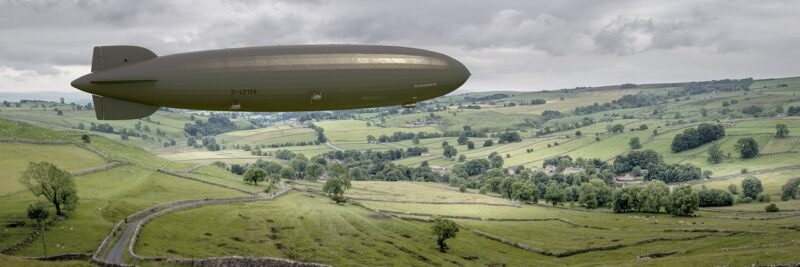
The Hindenburg disaster is one of the most notorious accidents in aviation history, marking the tragic end of the age of the airship. On May 6, 1937, the German passenger airship LZ 129 Hindenburg caught fire and was destroyed during its attempt to dock at Naval Air Station Lakehurst in Manchester Township, New Jersey. The event was captured by newsreel footage and photographs, making it one of the first major tragedies of the modern mass media age.
But what exactly led to this disaster? This article delves deep into the factors that contributed to the Hindenburg catastrophe, exploring technical failures, human mistakes, and historical context.
1. The Rise of Airships
Before diving into the disaster itself, it’s important to understand the significance of airships in the early 20th century. Airships, or dirigibles, were considered the pinnacle of luxury air travel before the Second World War. Their spacious cabins, dining facilities, and observation decks made them a popular choice for wealthier travelers.
The Hindenburg was the largest airship ever built, measuring 804 feet in length. It was designed to transport passengers across the Atlantic from Germany to the United States, boasting a speed of 84 miles per hour and a journey time of about 60 hours. As a symbol of German engineering, the Hindenburg was a point of national pride. However, its construction using hydrogen—the most flammable gas—raised safety concerns that would soon be tragically validated.
2. The Day of the Disaster
On the afternoon of May 6, 1937, the Hindenburg arrived in New Jersey from Germany, completing a transatlantic flight in just under 61 hours. As the airship began to maneuver toward its landing at Lakehurst, an unexpected storm loomed, causing turbulence.
Witnesses reported static electricity in the air, and as the Hindenburg descended, standing by were hundreds of spectators, journalists, and crew members waiting to greet the majestic vessel. Moments before landing, an explosion ripped through the airship, engulfing it in flames and creating chaos.
The disaster lasted just seconds, yet it resulted in the deaths of 36 people and left many more injured. Surviving crew members reported a loud hissing sound right before the fire erupted, possibly resulting from a gas leak or electrical discharge that ignited the hydrogen.
3. Investigations and Theories
In the aftermath of the Hindenburg disaster, investigations commenced to determine the root cause. The U.S. government, as well as the German authorities, conducted inquiries into the event. Early theories ranged from sabotage to structural failure. However, multiple investigations pointed towards a combination of factors:
- Hydrogen Gas: Hydrogen, being highly flammable, was increasingly scrutinized. Investigators suggested that the airship might have encountered a spark as it neared the landing field, causing the gas to ignite rapidly. Some theories also indicated that aluminum powder in the dope used to coat the fabric skin might have contributed to the combustibility.
- Static Electricity: There are theories suggesting that the unusual weather contributed to a buildup of static electricity. The prevailing theory indicated that as the ship approached, the static charge in the atmosphere could have easily sparked the ignition of hydrogen fumes.
- Human Error: Pilot error or miscommunication during landing could have exacerbated the situation. Reports indicated that crew members struggled to manage the controls and maintain stability in turbulent conditions, possibly leading to electrical lifelines becoming disconnected, triggering the fire.
While the exact cause of the fire remains a topic of debate, the consensus leans towards a combination of these factors rather than a single element being solely responsible.
4. The Impact on Air Travel
The impact of the Hindenburg disaster extended beyond the tragic loss of life; it marked a pivotal moment in the history of air travel.
With the disaster widely publicized and the enduring images of the burning airship captured in film, public confidence in airships plummeted, leading airlines to gradually phase them out in favor of heavier-than-air aircraft—primarily airplanes.
The luxury of air travel shifted from the grand airships to faster, safer commercial flights, fundamentally altering the aviation landscape. By the end of World War II, airships were relics of the past, with airplanes reigning supreme in the aviation industry.
5. Legacy and Remembrance
Understanding the Hindenburg disaster today is essential not only for its historical context but also for its lessons concerning safety in transportation. The tragedy highlighted the necessity of rigorous safety measures in aviation and pushed forward investigation protocols and regulatory changes aimed at improving safety standards in air travel.
Today, the Hindenburg disaster is preserved in documentaries, articles, and historical discussions. Memorials and tributes honor the victims while serving as reminders of the past missteps that catalyzed meaningful change in flying safety regulations.
As we look back at this chilling chapter in aviation history, we reflect on how moments like the Hindenburg disaster serve to protect current and future generations of travelers.
Conclusion
The Hindenburg disaster was not merely an accident— it was the end of an era in aviation history. While advancements in aviation technology have considerably increased safety standards since then, the lessons learned from the Hindenburg continue to resonate within the aviation industry today. Through a combination of mechanical limitations, human oversight, and historical context, this tragedy painted the airship not only as a marvel of engineering but also as a cautionary tale for future generations.
The fusion of these stories is why the Hindenburg disaster remains a powerful reminder in discussions of aviation safety and history. The tragedy lies not just in the fiery demise of a magnificent airship but in the valuable lessons imparted as we strive to ensure that such an event never occurs again.







